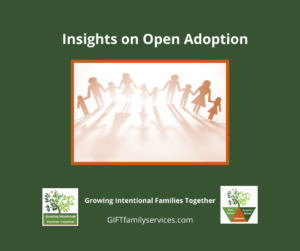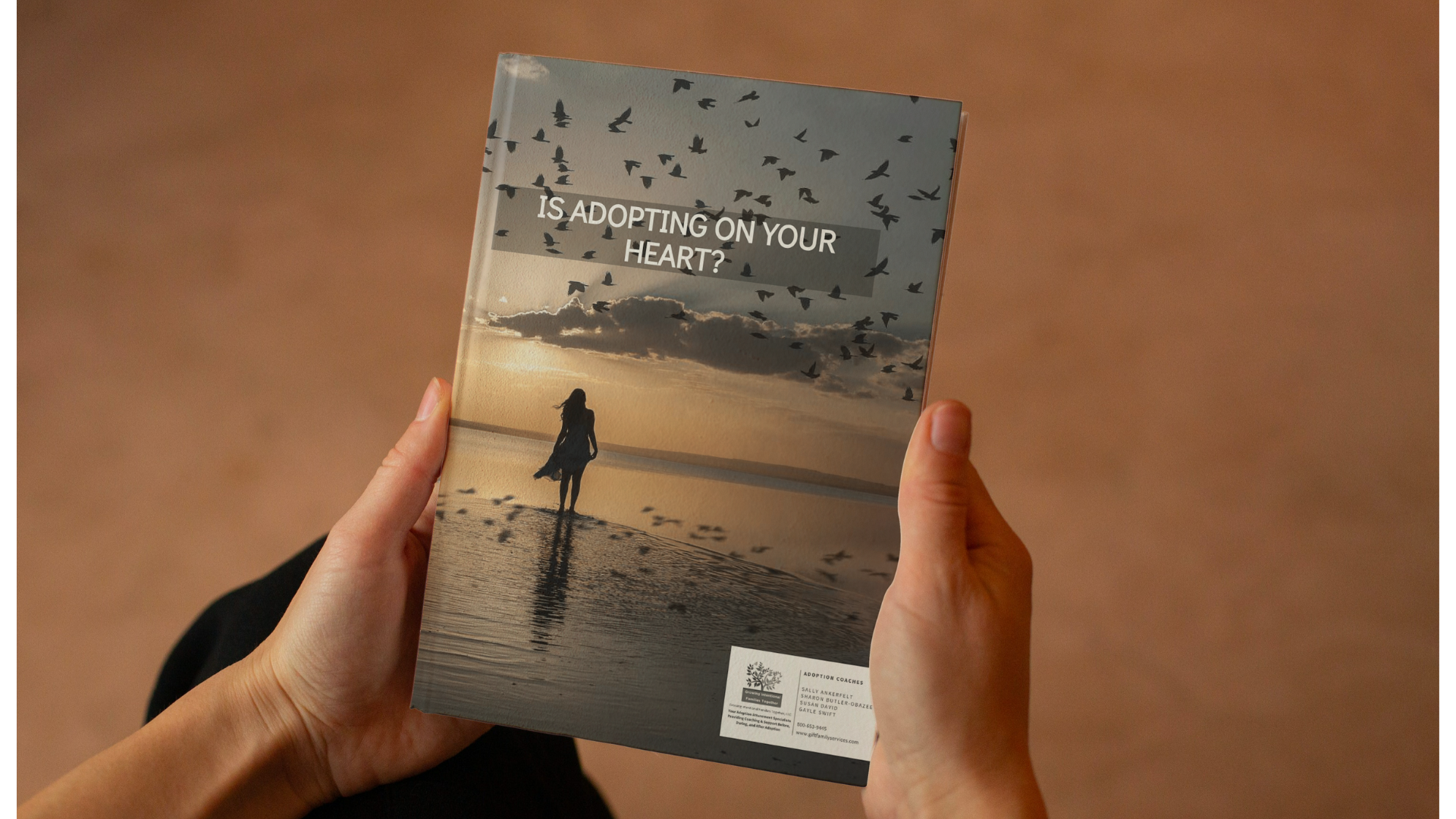 In their most recent vlog birth mother Kim Noeth, adoptee Sharon Butler Obazee, and adoptive parent Sally Ankerfelt interviewed Brian De Vos, an adoptive dad of two now-adult children. Brian, is the son of an adoptee as well as an adoptive parent. This provided him some direct experience of the impact that adoption had on his mother and elicited empathy for her adoption-connected stresses, pains, and losses. This in turn, informed his approach as an adoptive parent.
In their most recent vlog birth mother Kim Noeth, adoptee Sharon Butler Obazee, and adoptive parent Sally Ankerfelt interviewed Brian De Vos, an adoptive dad of two now-adult children. Brian, is the son of an adoptee as well as an adoptive parent. This provided him some direct experience of the impact that adoption had on his mother and elicited empathy for her adoption-connected stresses, pains, and losses. This in turn, informed his approach as an adoptive parent.
Brian and his family successfully navigated open adoption with two different birth/first families. It was an enlightening and encouraging conversation. This blog will reflect some of his interesting and valuable insights along with some of our own.
Open adoption is the norm these days
The word openness conjures different ideas in people’s minds. Each family experiences openness in varying degrees and in their own way. Many folks think openness is limited to some type of in person contact. In fact, openness reflects a blend of both physical interaction and a mindset. Adoptive parents demonstrate an openness mindset when they hold an emotional and psychological attitude that welcomes the presence of birth/first parents and extended family.
Contact refers to the actual physical interaction between birth/first families and adoptive families. People may be surprised to learn that some very open adoptions include little or no contact. For example, in international adoption physical contact is typically impossible. Their openness exists in the way adoptive parents affirm, respect, and validate their child’s interest in their birth families. Parents express their welcoming attitude through their words, attitudes, and body language. And, then parents encourage the child to express their thoughts and feelings. This child-centric approach not only benefits the child, but also the birth and adoptive families as well.
Other open adoptions include a great deal of contact and are open literally and in spirit. Both adoptive and birth/first parents work diligently to ensure genuine openness. They meet and surmount the inevitable challenges, logistical complexities, and complicated emotions that arise.
What contact looks like
Contact can occur in a variety of ways– in person, online, through letters, emails, photos, videos, telephone, video conferencing, and texts. Other examples of contact can include visits, shared excursions and vacations, attending the child’s school and athletic activities, and/or family celebrations.
Contact does not ensure openness
Other adoptions are open but only on the surface. This shows up in the way the adoption is practiced. For example, physical contact with birth/first mother or family might only be tolerated and not actually be welcomed.
Then when adoptive parents engage with birth/first mom and family, their attitude might be steeped in aloofness, judgment and closed off-ness. The birth mother may sense that the adoptive parents are looking for a reason to lessen and/or end contact. Their engagement is tense and uncomfortable for the child and all of the adults.
The visits can then become unsettling for the child and they might exhibit distress after the visit. Since behavior is the primary way that children express their thoughts and feelings, the child’s behavior may deteriorate. Not realizing how they might have unconsciously undermined the potential success of contact, the adoptive parents can use that acting out as a reason for suspending or terminating contact.
In short, an attitude of openness is an essential ingredient to an open adoption.
Other vital ingredients for an open adoption
In addition to openness, open adoption requires mutual respect and understanding, empathy, and flexibility. All of these reinforce the common purpose of doing what is best for the child that both adoptive and birth parents love and care about.
Open Adoption is not a panacea
While open adoption is generally thought to be better for adopted children, it does not remove the hard realities of adoption-connected grief, loss, pain, and yearning. Open adoption does remove a lot of the secrecy and provides the possibility of genetic mirroring, accurate biographical and health information access, and interaction with birth/first mothers and family.
Open adoption is not co-parenting.
It is more akin to co-loving. All hands are on deck working to do what is best for the child. Of course, the logistics will be complicated. More people involved mean more feelings to consider, calendars to balance, and priorities to arrange. Adoptive parents will want to commit to doing whatever they can to make it work. As Jim De Vos mentioned, open adoption is a family system with lots of working parts. It helps when folks can
- Recognize one another’s humanity
- Be flexible
- Communicate clearly
- Understand that people and circumstances change
- Look for and appreciate their commonalities
- Be willing to forgive
Tri-relational Interconnectivity
Adoption is not something a child experiences in isolation. It is an experience defined by the bonds that join the child, his birth parents and the adoptive parents because of their connection to the child. We call this Tri-relational Interconnectivity. Factors that touch one person in the adoption triad have repercussions for everyone in the triad. Sometimes the impact is subtle. Sometimes it is intense. Sometimes it is observable. Sometimes it is intangible–only felt or sensed. Sometimes the impact is immediate. Sometimes it unfolds later.
Adoption is a lifelong journey
When parents adopt a child, they enfold them into their hearts and family for a lifetime. So, it can be quite helpful for parents to keep that long-term perspective in mind when making decisions about and for their child.
Eventually, children grow into adults. They will have thoughts and feelings about the decisions and choices that their parents made on their behalf. Explanations and reasons that satisfied them when they were six won’t suffice at sixteen. As they proceed through adulthood, they will seek more and more detailed answers. Parents will always want to be able to answer their adult child feeling comfortable in the knowledge that they consistently and genuinely operated with their child’s best interest at heart.
__________________________
-
- Call us at 1-800-653-9445
- Listen to our podcasts: Adoption Matters: Real People. Real Life. Real Talk and Essentials of Adoption Attuned Parenting
- Watch our YouTube channel
- Read Books written by our coaches
- Click to learn more about Adoption Attuned Certified coaching!
- Check out our on-demand courses.


